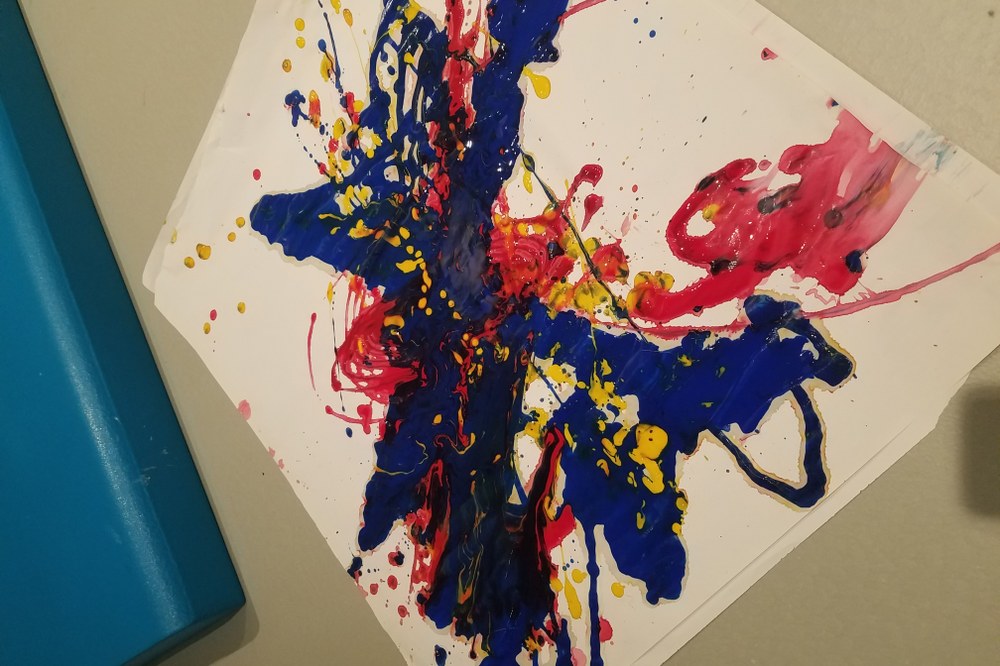Posted: November 13, 2017
Do the children in your program sometimes demonstrate amazing creativity? Do they explore art media in interesting, unique ways? Celebrate their work through effective displays!

Once this art is displayed, a teacher can have conversations with toddlers about it, recalling how they swung a pendulum back and forth to create the arcs of color. (Art photo provided by Shannon Clarke, EC Educator, MacKids Learning Academy, Kansas City
Download this article as a PDF.
Art displays
In the early childhood education environment there are usually two audiences, with displays that differ.
The first audience for art displays in the ECE environment is the creators, the children.Display children's artwork in the classroom at children's eye level to affirm their efforts and to inspire further creativity. Displaying children's work communicates that they matter and that their art has value. "Children are very aware of whether or not we cherish their work … The attention we pay to creating and documenting displays of children's artistic work promotes visual and verbal messages." (Pinciotti 2001)
Take these steps to value children's art:
- Interview the child to get information about the work.
- Mat, frame, or otherwise focus attention on each piece. Mat two-dimensional works on colored construction paper with at least one inch or larger border on all sides of the art piece. Choose a complementary or neutral color. Mat board or other types of paper also make suitable frames.
- Label the work with a name and information about the technique used or the subject of the work. If possible, do not write directly on the work but display the label near the art as a museum curator would.
- Hang work at the child's eye level, within reach. Remember that babies may spend a lot of time on their backs, looking up. For infant rooms, put art behind protective acrylic, laminate or protect with vinyl sleeves.
- Include photos of the children creating the art alongside the finished art pieces.
- Change displays regularly. Children stop attending to displays that have been up for a long time.
NOTE: Be aware of and follow local fire codes. The National Fire Protection Agency Codes state only 20% of walls can be covered with any type of combustible material in a space without sprinklers. This can be increased to 50% if a school is protected by a fire sprinkler system. The main intent of this code is having separation between these materials so if a fire starts, it cannot travel from one wall to another around the entire room or down the entire length of a hallway. (Wisconsin.gov 2013)
The second audience for art displays in the ECE environment is family members and stakeholders in the program. Displays for this group should tell more of the story, making the learning visible in addition to posting the art. These displays should be uncluttered and communicate a message about the process that the children experienced, and the inspiration or goals behind the art exploration.
These displays might be set up in an entryway or shared hallway at adult eye level. Like art displayed in the classroom, label works with the child's name and helpful descriptions.
Would you like to learn more?
- Click here for a more detailed handout.
- Consider new options for art explorations
- or check out BKC OnDemand modules:
- "Art Appreciation 101 for Young Children"
- "STEAM for the Preschool Programming Engine"
References
- Pinciotti, Pat. 2001. Art as a Way of Learning: Explorations in Teaching. Northampton Community College.
- Wisconsin.gov. 2013. "Fire Codes and Environment Rating Scale Wall Display." Wisconsin.gov.

